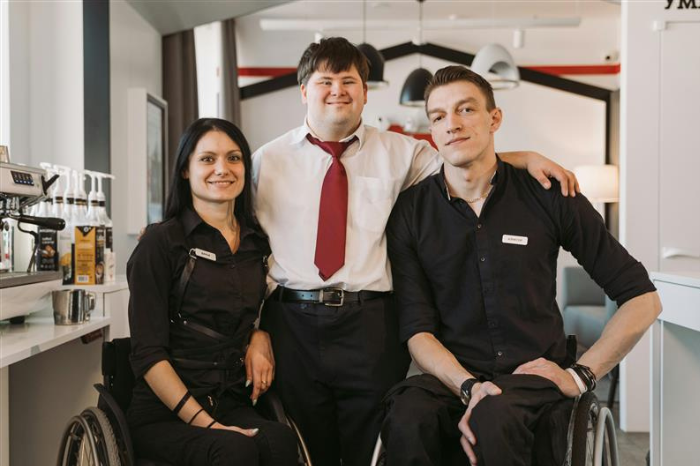
If you’re applying to join the National Disability Insurance Scheme (NDIS), going through a plan review or reassessment, or challenging a National Disability Insurance Agency (NDIA) decision, it may feel like your voice is lost in swathes of letters and assessments prepared by medical and allied health professionals.
While gathering evidence to support your case, you may wish you could just tell the NDIA what it’s like to live a day in your life. That way, the Agency would understand what it’s like to be you, and recognise the supports you need – right?
Well, there is a way you can share your story – through a statement of lived experience (if you’re a participant) or a carer statement (if you’re a carer of someone with disability).
What you have to say is powerful, and by voicing it, you can strengthen your position and have an impact on the NDIS funding allocated to you or the person you care for.
According to Zena Dyson, a Specialist Support Coordinator at Esteem Care Services, a lived experience statement is a letter from a person to the NDIA explaining what the effects of their disability are and how it impacts their daily life.
“It presents a person’s perspective of their personal situation and evidence of what direct supports they require to live a more supported daily life,” says Zena.
“This is helpful when applying for the NDIS, at plan reviews or reassessments, or for a review of an NDIA decision. It provides the NDIA with a step-by-step guide to what you can or can’t do daily due to disability.”
The power of a statement of lived experience shouldn’t be underestimated.
“A statement of lived experience provides evidence for what NDIS supports (and amount of funding) are needed,” says Zena.
“Together with evidence, such as allied health reports and medical diagnosis evidence, it can be crucial evidence to determine the funding received from the NDIA.”
Kristie Findlater – Founder of the Western Sydney Support Coordinators Network, who recently swapped a career in support coordination to work at My Plan Manager – agrees. She says it’s critical to provide a lived experience statement to the NDIA if a current plan is underfunded, or if you’re going into crisis.
“You could be in a position where currently you’re okay, but in a couple of months you’re going into hospital and you have a child who’ll need extra care, which requires more funding,” says Kristie.
“I was working with a participant whose Mum lives with PTSD, severe depression, and a chronic medical condition. She was also caring for her daughter as a sole parent. The NDIA didn’t consider how much support was really needed and, as a result, her plan was underfunded.
“She provided a lived experience statement in a plan reassessment, and the evidence to go with it, and she secured more funding in her daughter’s plan.”
Kristie says a lived experience statement is also important evidence when too little funding is received in a plan.
“A lived experience statement shows you’ve disclosed critical information about your life to the NDIA and have provided the evidence to support it. If you get a plan back with too little funding, you can ask for a reassessment based on the fact that the NDIA hasn’t considered everything provided in your lived experience statement.”
There’s no right or wrong way to write a statement of lived experience. That’s because you and your experiences are unique, so how you write about them will be too.
Whether you’re comfortable writing a formal letter, or prefer communicating through bullet points, here are some basics to consider when crafting your statement of lived experience:
If you feel stuck, you can seek support from a family member, a friend, or your support coordinator (if you have one). You can also take inspiration from these free templates:
Remember, no one knows your experience and the support you need like you do – let your voice shine.
A carer statement is a letter written by a person who cares for an individual with disability. It gives the carer’s perspective of the impact of disability on the individual and those around them.
When writing a carer statement, Kristie recommends being honest.
“A lot of carers try to paint a positive picture to the NDIA, because they’re doing it in front of a person they care for in a planning meeting or in a carer statement that a participant could read,” says Kristie. “But from experience, ‘positive’ doesn’t always paint the full extent of disability and can result in less funding.”
“I had to write carer statements for both my children and culled a lot of information, because I was scared they’d eventually read them. It comes down to what you’re comfortable including and it can be difficult.”
As with a statement of lived experience, there’s no right or wrong way to craft a carer statement. Here are some basics to consider including:
If you’re a carer, you’re likely to be low on free time – so here are some carer statement templates you can adapt to get you started:
Tip #1 If you have physical or mental health issues or conditions that mean you’re not coping, be sure to include them in your statement. Talk about your life, living situation, ability to maintain a home and do day-to-day tasks from the minute you wake up, and how the challenges you experience stop you from getting a job or caring for yourself, or how they’re impacting your mental health.
Tip #2 If you’re a carer, talk about your support networks and your ability to maintain a job if your carer role impacts work. The NDIA assumes every participant has a network to support them – but if that’s not the case, make it clear.
Tip #3 If you’re going into a plan review, write the statement a week or two before the review, because the NDIA wants your statement to be current.
Tip #4 Provide as much evidence as possible to go with your statement – like allied health reports and medical diagnosis evidence. Without this evidence, you won’t have a case.
Tip #5 Break it up. Write your statement in a Word document and add to it over time to make it more manageable and to be sure you’ve covered everything.
Whether you’re a person with disability, or a carer, remember your voice has impact. Only one person can truly tell your story – and that’s you!


